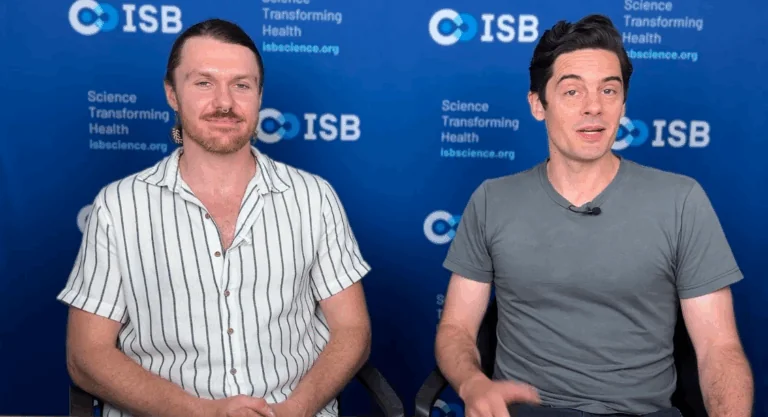How Generative AI Is Helping Decode the Human Immune System
In a Research Roundtable presentation and Q&A, ISB President Dr. Jim Heath shared how his team is using generative AI to unlock new understanding of human immunity, and how these discoveries could help predict disease severity, improve cancer therapies, and more.
In a recent ISB Research Roundtable, ISB President and Professor Dr. Jim Heath introduced a groundbreaking application of generative AI that sheds new light on the human immune system and offers a powerful tool for studying aging, cancer, infectious diseases, and chronic illnesses.
At the center of the talk was TARPON, a new generative AI model developed by Heath and researcher Daniel Chen. Trained on more than a million human T cell receptor (TCR) sequences, TARPON reveals fundamental “rule sets” that govern how the immune system develops and functions, especially during early life in the fetal thymus, where immune cells first learn to distinguish self from non-self.
TARPON works by analyzing the hypervariable region of TCRs – the unique protein sequences that allow T cells to recognize foreign invaders – and mapping them into a 42-dimensional space. From there, the model can generate entirely new, realistic TCRs, revealing how the immune system might respond to viruses, cancer cells, or even novel pathogens.
Aging, Rule Breaking, and Disease Severity
One of the key discoveries shared by Heath is that these immune rule sets, clearly observed in fetal development, often begin to break down in adulthood. In analyzing patients with COVID-19, TARPON identified individuals, particularly older men, whose T cells exhibited abnormal behavior, blurring the distinction between helper and killer cell functions. These “rule-breaking” T cells correlated with worse disease outcomes, revealing a new way to quantify and potentially predict immune system dysfunction.
Implications for Cancer and Chronic Disease
Because TARPON links each T cell receptor to vast metadata, such as patient age, sex, health records, blood protein levels, and more, it provides a powerful lens to explore immune diversity at an individual level. Heath emphasized that these insights could one day help predict which cancer patients are most likely to respond to immunotherapies, or flag people at greater risk of severe disease based on subtle immune markers.
While still in early development, TARPON is a first-of-its-kind tool that combines systems biology and generative AI to build a data-driven, dynamic model of human immunity. As datasets grow – from one million TCRs to potentially hundreds of millions – so too will the model’s power to uncover the immune system’s hidden logic.
About Research Roundtable
Heath delivered the presentation and answered questions from a virtual audience during ISB’s ongoing Research Roundtable series.
Research Roundtable is a free, virtual event series hosted by ISB. These accessible conversations feature ISB scientists sharing their latest discoveries and answering audience questions. Topics have included gut microbiome health, long COVID, immunotherapy, Alzheimer’s disease, and more.
Learn about upcoming and past sessions at isbscience.org/events.


